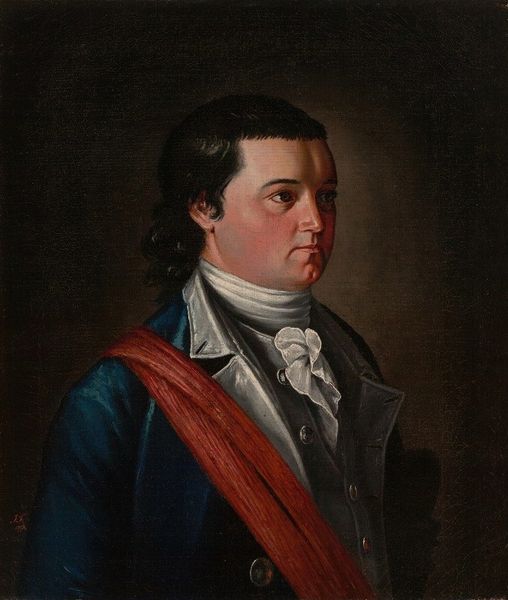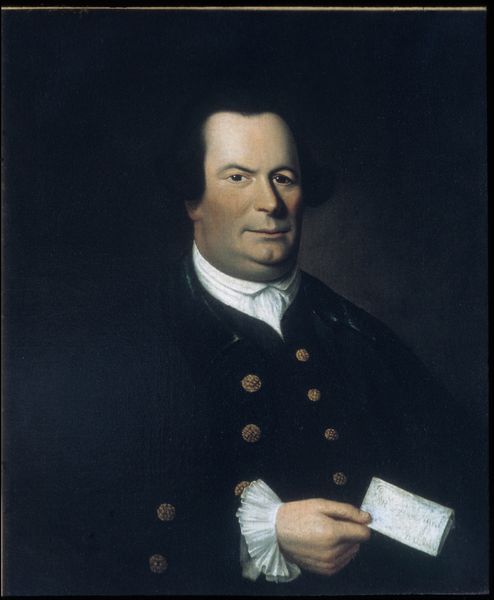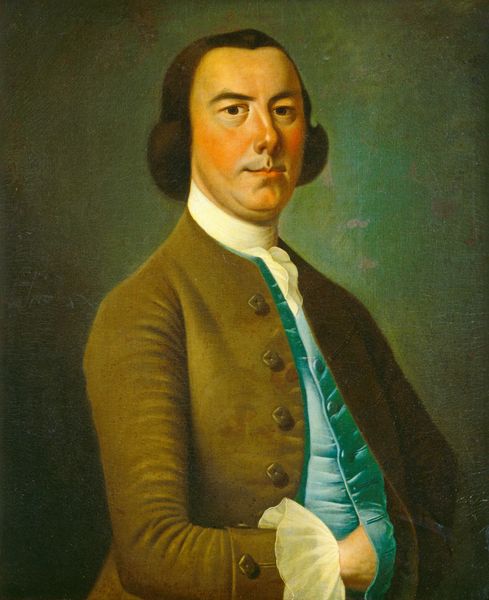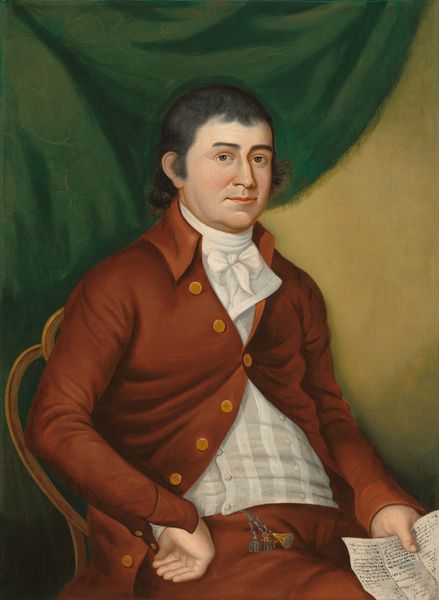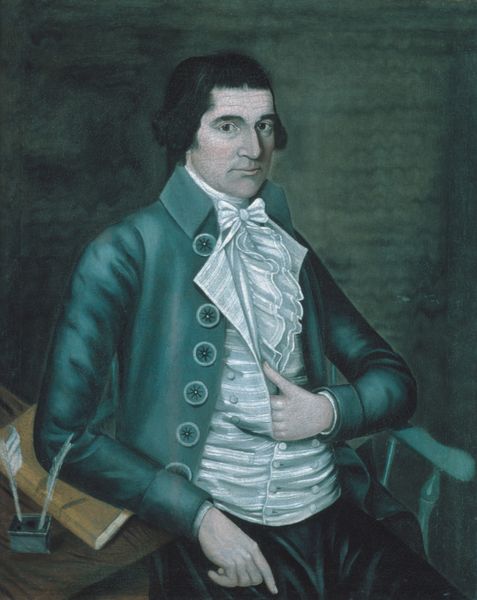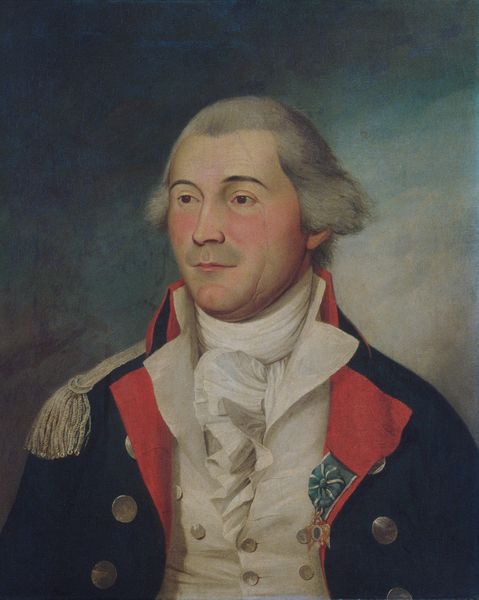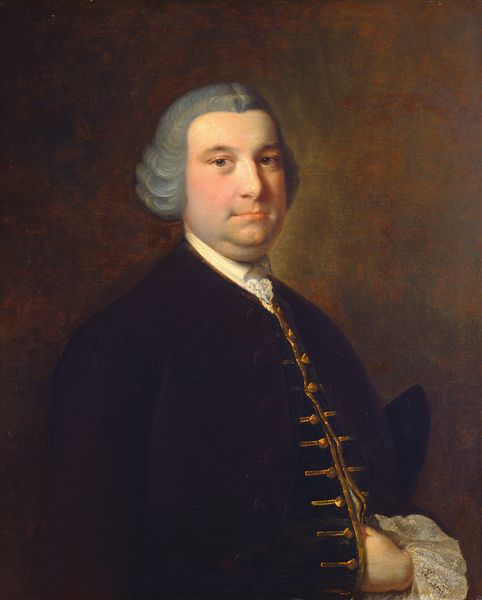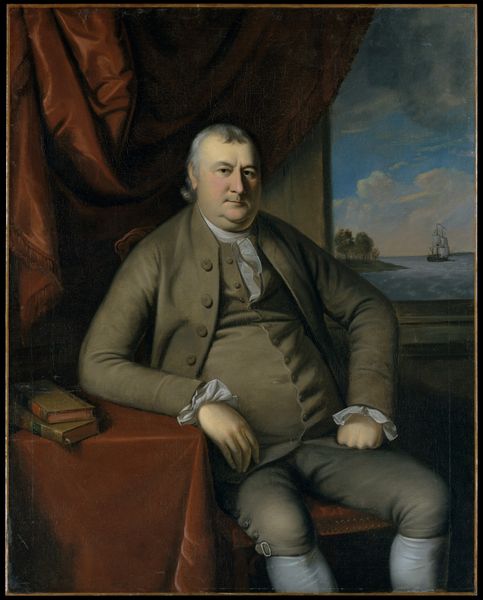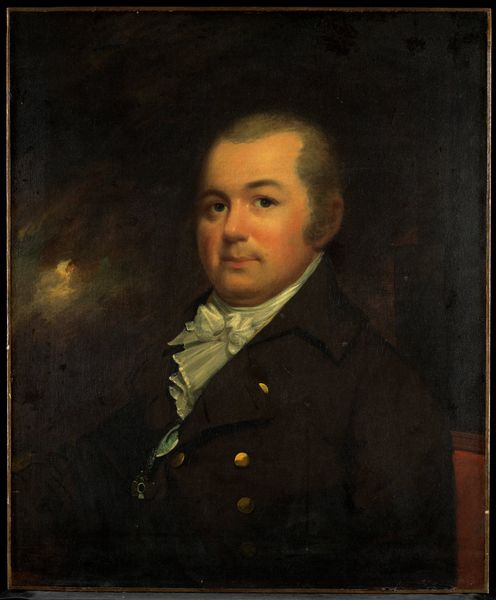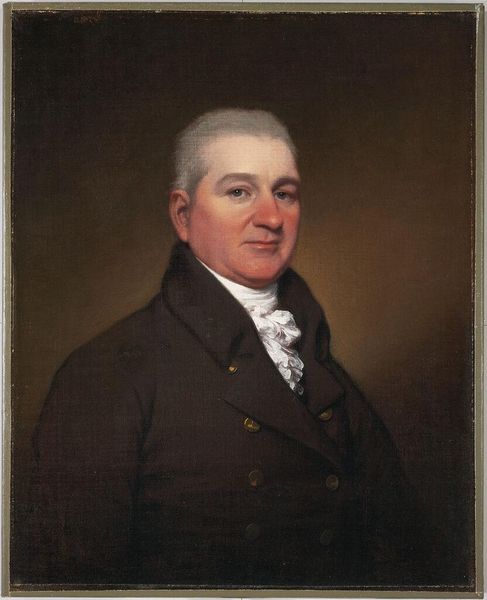
painting, oil-paint
#
portrait
#
neoclacissism
#
painting
#
oil-paint
#
history-painting
#
academic-art
Dimensions: overall: 90.8 x 70.6 cm (35 3/4 x 27 13/16 in.) framed: 107.6 x 87 x 5.9 cm (42 3/8 x 34 1/4 x 2 5/16 in.)
Copyright: National Gallery of Art: CC0 1.0
Curator: Standing before us is an oil painting dating back to around 1770. The artist is John Durand, and the work is titled "John Lothrop". Editor: He looks a bit… uncomfortable, doesn’t he? Stiff, almost. Like he’s been told to sit still and think about England. Curator: Indeed. We're seeing echoes of Neoclassicism here, particularly in the composition's formality. But look closer. There are elements here also reminiscent of the academic style; notice how every button, every ruffle, is meticulously rendered? Such details were deliberate statements about status and the subject’s refinement. Editor: Oh, absolutely. The power dressing of the 18th century! That burnt-orange coat screams, "I’m somebody, or at least, I aspire to be!". Still, I sense a hesitancy there, like he is consciously putting on this facade of composure. I wonder what a modern psychologist would say? Curator: Perhaps the tension speaks to the broader pre-revolutionary context? After all, symbols speak of cultural memory, and clothing serves as an explicit cultural artifact that also implies status or hierarchy. Consider how Lothrop has been intentionally depicted with books, a quill, and an inkpot – a reference to his position in society. Durand uses this type of symbolic language very deliberately. Editor: A symbol carefully designed, no doubt! I imagine those heavy tomes convey "wisdom," and that quill and inkpot certainly signal not just education, but, as we move toward the revolution, authority of the word. Maybe his slight unease comes from the shifting sands of that very authority. Curator: It's an astute observation. I agree that reading this work only at face value misses the greater subtleties behind that controlled outward presentation. Editor: Yes, images of powerful men are potent sites for psychological projection. Even across centuries, these images allow viewers to consider questions about stability and legitimacy during revolutionary times, while hinting, through our modern perspective, at the shifting complexities underneath. What do you make of that small, self-satisfied smile? Curator: The layering is fascinating. Each symbol functions simultaneously at a few levels to speak on this subject's position in culture. To consider that our interpretation of each symbolic function also speaks on modern-day interpretation and theory… I have new perspectives now after this consideration. Editor: As do I, seeing it all unfold, one layer at a time, lets us consider, and re-consider how individuals want to present themselves at specific times. Thank you!
Comments
No comments
Be the first to comment and join the conversation on the ultimate creative platform.
